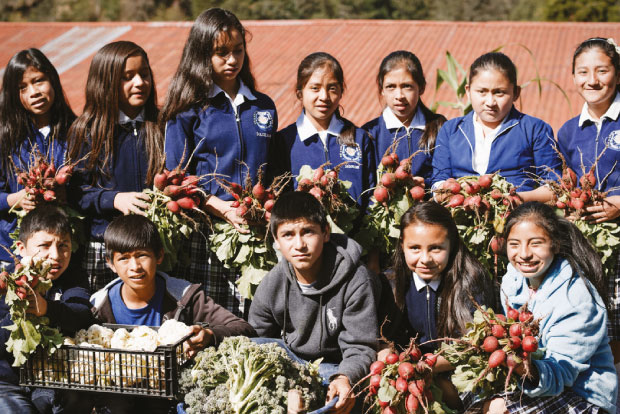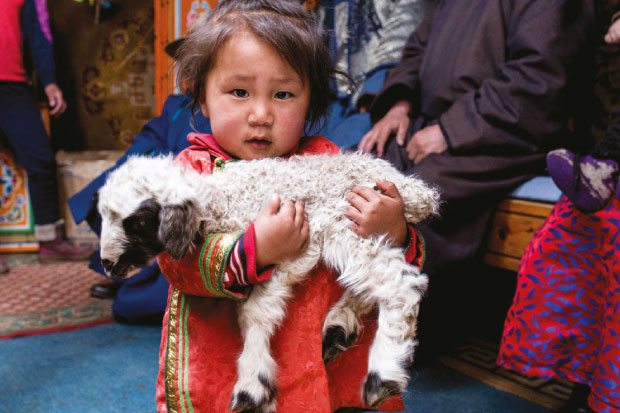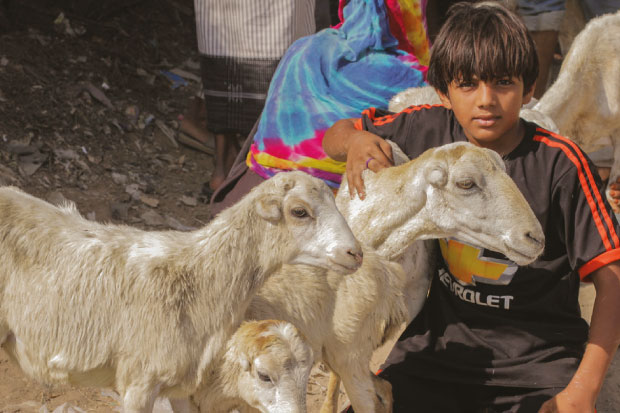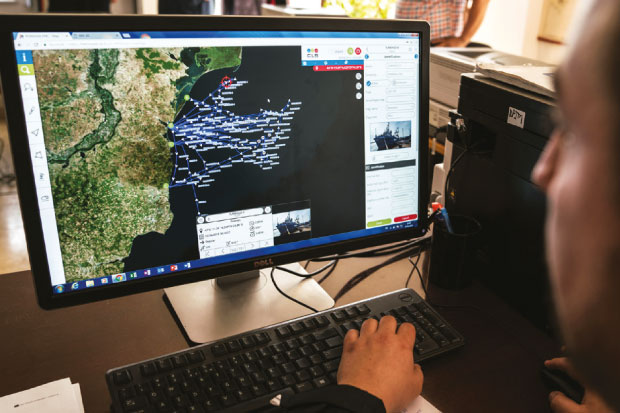Reducing Emissions from Deforestation and Forest Degradation (REDD+)
The REDD+ scheme is a global climate change mitigation solution developed by Parties to the
United Nations Framework Convention on Climate Change (UNFCCC). It incentivizes developing
countries to keep their forests by offering results-based payments for actions to reduce or
remove forest carbon emissions.
The UN-REDD programme supports countries to develop the capacities needed to meet the
UNFCCC’s REDD+ requirements so that they can qualify to receive results-based payments under
the Convention. In this context, FAO’s technical assistance in the forestry and land-use
sectors is key in building national institutional capacity to develop reference levels and
national forest monitoring systems, including multipurpose forest inventories, as well as to
formulate and implement REDD+ strategies and plans.
The programme supports nationally-led REDD+ processes and promotes the informed and
meaningful involvement of all stakeholders, including indigenous peoples and other
forest-reliant communities.
Special Fund for Emergency and Rehabilitation Activities (SFERA)
SFERA enables FAO to take rapid and effective action in
response to food and agricultural threats and emergencies.
The fund has three components:
- a working capital component to advance
funds, once a resource partner's commitment
is secured, toward the immediate
procurement of inputs to protect livelihoods,
restart agricultural activities or contribute to
an immediate response to a crisis;
- a revolving fund component to support needs assessments, programme development,
early establishment and reinforcement of emergency country team capacities, Level 3
emergency preparedness and response activities; and
- a programme component to support
work on specific large-scale emergency
programmes, or strategically complement
ongoing programmes through the Agricultural
Inputs Response Capacity (AIRC)
window, as well as early actions triggered by
corporate early warnings.
In 2018, the total contribution to SFERA from resource partners amounted to USD 9.6 million.
The major contributors to SFERA were Belgium and Sweden.
The Swedish International Development Cooperation Agency (Sida) continued supporting SFERA
with an allocation of USD 2.4 million. These Sida flexible funds enabled FAO to address
urgent gaps in response to crises and to act early once an impending threat was identified
and before disaster losses are sustained in the agriculture sector or livelihoods
compromised. The time lapse between funding decisions and actions on the ground was
significantly reduced with these flexible funds.
Belgium supported FAO early action and emergency activities with a USD 4.4 million
allocation.
FAO Investment Centre
Investing in food and agriculture remains a top priority for
achieving Zero Hunger and reaching the SDGs by 2030.
In 2018, the FAO Investment Centre helped to scale up the impact of FAO’s Strategic
Objectives and assisted countries in developing a conducive environment for public and
private investment resulting in:
46
public investment
projects in
financed by international financial institutions (IFIs)
and "governments, with" a total investment value of
USD 7.2 billion
The FAO Investment Centre is the corporate focal point for partnerships with major IFIs. FAO
currently collaborates with over 30 IFIs, including the World Bank, the International Fund
for Agricultural Development (IFAD) and the European Bank for Reconstruction and Development
(EBRD), as well as regional development banks.
Collaborating with United Nations Rome-based agencies
Enhanced collaboration at all levels between the United Nations Rome-based agencies (RBAs) – FAO, IFAD and
WFP – is a core priority. Achieving a Zero Hunger world is the shared mandate..
The three agencies are working closely together on a long-term sustainable development agenda
that
transforms people’s lives and improves their food security today and in the future.
In mid-2018, the three agencies signed a five-year Memorandum of Understanding to strengthen
collaboration and coordination at global, regional and country levels in order to provide
enhanced support to Member Countries. The agreement sets out areas for comprehensive and
integrated support, including national planning processes, shared data analysis and the
development of joint outcomes, programmes and assessments.
Supporting the Smallholder and Agri- Small and Medium Enterprises (SME) Finance and Investment Network
FAO and IFAD
collaborated in 2018 to
support the Smallholder
and Agri-SME Finance
and Investment
Network (SAFIN). FAO’s
primary role has been to
help governments and
other partners focus
investments in value
chains to deliver positive
impact on nutrition, environmental sustainability and
other key aspects of the 2030 Agenda for food systems.
Among the results of this collaboration is the recently developed Letter of Agreement with
the Government of Bangladesh to support the country’s efforts to mobilize investment in
sustainable agriculture and food systems, including appropriate financial tools and enabling
environments for agri-SMEs.
Responding together for
resilience and recovery
In 2018, FAO and WFP worked together on a groundbreaking integrated emergency response in
South Sudan, demonstrating a key aspect of country-level collaboration. The agencies carried
out joint interventions as well as needs assessments in some of the country’s most food
insecure, conflict-affected areas.
Within the Partnerships for Resilience and Recovery programme, FAO and WFP are working
together to restore and diversify community livelihoods, promote sustainable crop and
livestock production and strengthen community and intercommunal resource sharing and
management practices.
PART 3
FAO selected results and success stories
linkRead more on FAO results and success stories
(PDF)
linkFMM
linkAfrica Solidarity Trust Fund

The Hunger-Free Latin America and the Caribbean
Initiative Project brings together governments,
parliaments, academy, civil society, the private sector and
regional bodies who are prioritizing the fight against
hunger in their national and regional political agendas.
With FAO technical support, the project strengthened institutions and helped
to design and implement regulatory frameworks and public policies for Zero
Hunger. FAO also supported 20 participating countries with resource
allocation schemes that met the magnitude of the problem in each country.
Results
20 national congresses as well as 2 subregional (PARLANDINO and PARLASUR)
and 1 regional (PARLATINO)
parliaments have created
Parliamentary Fronts
against Hunger (PFHs), as
plural political platforms
inside their own structures.
30 laws on food security
and nutrition.
+ 2.2 million boys
and girls in Guatemala
benefited from the
approval of a new school
meals law.
A strong alliance between
legislatives and academia,
where 60 universities as members of the Right
to Food Observatory for
Latin America and the
Caribbean (RFO-LAC) work
permanently with PFHs in
their countries.
83 000 public
servants, including
parliamentarians, have
received training from
2008 to 2019.
A solid alliance was built between Brazil, Mexico and Spain in support of the
PFHs and RFO-LAC.
-
Launch of the first-ever Global Parliamentary Summit against Hunger and
Malnutrition.

Mangroves are one of the world’s most productive
terrestrial ecosystems and are a renewable natural
resource. Mangrove ecosystems on the coast of
Cameroon are valuable both for their contributions to
local livelihoods and the globally important biodiversity
that they contain.
However, these areas are threatened by many development pressures as well as
unsustainable harvesting practices of local communities. 'Sustainable
Community-Based Management and Conservation of Mangrove Ecosystems in
Cameroon' is a FAO–GEF project that has increased community awareness on the
importance of mangrove ecosystems.
Through the inclusive participation of local communities and other key
stakeholders, the project’s activities aim at long-term sustainability of
mangrove forest ecosystems and their biodiversity.
Results
25 members of NGOs and 75 state employees trained to conduct
environmental and social impact assessments.
More than 600 people
(51% women) were trained in sustainable fishing, processing, packaging and
selling of oysters.
More than 500 inhabitants trained on
Mangrove management.
More than 7 hectares of mangrove areas reforested.
14 local women
groups trained in income
generating activities
in connection with the
ecosystem services of the mangroves.
1 400 inhabitants
learned about sustainable
management of mangroves
as well as methods to
enhance low impact
income-generating
activities.
Creation of the first mangrove community forest in the Manoka region covering
2 700 hectares.

Even though rural women make up 65 percent of farmers, they do not have equal
access to the resources and opportunities that would enable them to be more
productive. The goal of the 'Rural Women`s Empowerment in Agriculture
Programme (RWEAP)' is to reduce rural poverty and enhance food security and
nutrition by accelerating rural women’s economic empowerment. The programme
has been implemented in three countries: the Democratic Republic of the
Congo, Eswatini and the Gambia.
In the Democratic Republic of the Congo, RWEAP is scaling up Dimitra Clubs, a
successful FAO participatory approach that promotes rural women and men’s
socioeconomic empowerment. The clubs are the main community-level entry
point and have triggered behavioural changes, food and nutrition security,
better access to information, opportunities, and women’s participation in
decision-making and leadership.
Results
In the Democratic Republic
of the Congo, 496 people (310
women and 186 men)
from 23 newly formed Dimitra Clubs improved their organizational, problem-solving
and leadership skills throughout the process.
As a result, women play
an active role in local
decision-making processes
and have engaged in various empowerment initiatives based on collective action.
243 women benefited from training in vegetable
gardening and 87 in aquaculture.
14 treadle water
pumps were distributed
to the 14 Dimitra Clubs engaged in the vegetable
gardening reducing
the effort and time
required by the farmers, in particular women, to water the gardens.
-
23 Dimitra clubs have created their own village savings and loans
association.
In Eswatini, 36 women’s groups,
a total of 603
beneficiaries, participated
in capacity building
activities on sweet
potato processing and
preservation methods to
diversify their use of sweet
potatoes at household
level and improve
nutrition in their homes.
12 women’s farmer
groups, numbering more
than 300 members in total, participated in capacity development in
farmer mobilization, business planning and management and financial literacy
to strengthen entrepreneurship skills and form savings groups with better linkages to markets.
The project also provided women’s groups with processing equipment including
tables, dough-mixing machines, baking ovens, gas cookers, weighing scales,
kitchen scales and thermometers, for baking secondary products of sweet
potato flour.
In the Gambia, more than 450 family
poultry farms, members of
the Rural Poultry Farmers'
Association, benefited
from a new feed mill to
prepare quality poultry
feed and improve the
profitability of their
poultry farms.
5 feed mills and feed
production units were set
up in beneficiary villages.

FAO’s ambitious global, regional and national programming on Antimicrobial
Resistance (AMR) is helping countries in Africa, Asia, Europe, and Latin
America and the Caribbean boost agricultural efficiency while addressing the
underlying drivers for the misuse and overuse of antibiotics and other
antimicrobials.
Building on the FAO Action Plan on AMR (2016–2020),
FAO is guiding worldwide efforts and working closely
with countries to raise awareness and motivate changes in
practice; strengthen policy and governance; and improve
surveillance of antimicrobials and resistant microbes across
the food chain. A key focus of these efforts is helping
countries develop ‘One Health’ National Action Plans to
protect the health of people, animals and the environment.
Results
The World Antibiotic
Awareness Week (WAAW)
is a tripartite-led campaign
and rallying call for action.
So far, 110 countries held targeted, nationwide campaigns, and nearly 500 events were organized
in 2018.
FAO and WHO piloted the Smart Phone for Change
programme in the Near East
and North Africa region,
targeting health, pharmacy
and veterinary students to
become key influencers for
responsible antibiotic use in
their fields.
FAO developed a methodology with OIE to analyse national legislation relevant
to AMR. This
has been applied in 10
countries, triggering
regulatory reform in five of
them.

In 2018 violence continued to disrupt livelihoods in Yemen,
displace more people and restrict the movement of both
humanitarian goods and workers, limiting their capacity
to reach the most vulnerable. Despite this, FAO was able to
significantly scale up its humanitarian programme in the
country through the 'Support to Yemen' programme.
Thanks to the support of resource partners and in
collaboration with local partners in all areas of the country,
FAO’s team in Yemen delivered crucial support to millions of
people at risk of severe hunger.
As a result of their efforts, FAO’s expertise in farming,
livestock, fisheries and forestry is increasingly acknowledged
as a critical part of the humanitarian response in Yemen
and is not just saving lives, but is securing and restoring
agricultural livelihoods.
Results
More than 3 million people reached with crop and vegetable seeds,
fishing gear, poultry production kits and cash support.
More than 2.4 million livestock reached through FAO’s animal vaccination and treatment campaigns.
46 086 households,
including those with malnourished children under five and pregnant and
nursing mothers, received farming hand tools and nutritious vegetable seeds
in the Al Hudaydah and Abyan regions.
2 065 households, of
which 85 percent were headed by women, received feed for egg-laying
chickens and poultry housing equipment.
54% of rural women in Yemen were involved in agricultural activities.
2 900 women-headed households each received 3 to 5 sheep or goats, animal feed concentrate and feed blocks.
850 women-headed households received dairy equipment to improve milk
production.
6 030 women-headed households were trained in animal health feeding,
milk production, and sheep and goat fattening in the Lahj, Abyan, Al
Hudaydah and Hajjah regions.

The 'Global Strategy to improve agricultural and rural statistics'
inititative aims at developing modern and sustainable agricultural
statistics systems to boost data production for 21st century policies.
Concluded at the end of 2018, the first phase of
the Global Strategy aimed to develop cost-effective
methodologies and strengthen capacities of developing
countries in the field of agricultural and rural statistics.
The initiative has been implemented by FAO, the UN Economic Commissions for
Africa and Asia-Pacific and the African Development Bank in two regions,
Africa and Asia-Pacific.
Results
The initiative has
been critical for the
uptake of cost-effective methodologies in 21
countries in Africa and 18
in Asia-Pacific.
50 cost-effective
methodologies have
been developed, 120
guidelines and training materials disseminated.
Innovative methodologies
and tools have been field-tested in more than 50
countries in the world.
Strategic Plans for
Agricultural Statistics
(SPARS) have been prepared
in 40 countries in Africa
and in Asia-Pacific.
More than 1000
participants from 85
countries have been trained on cost-effective methods and 80 long-term
scholarships at the Master’s level provided in Africa.












